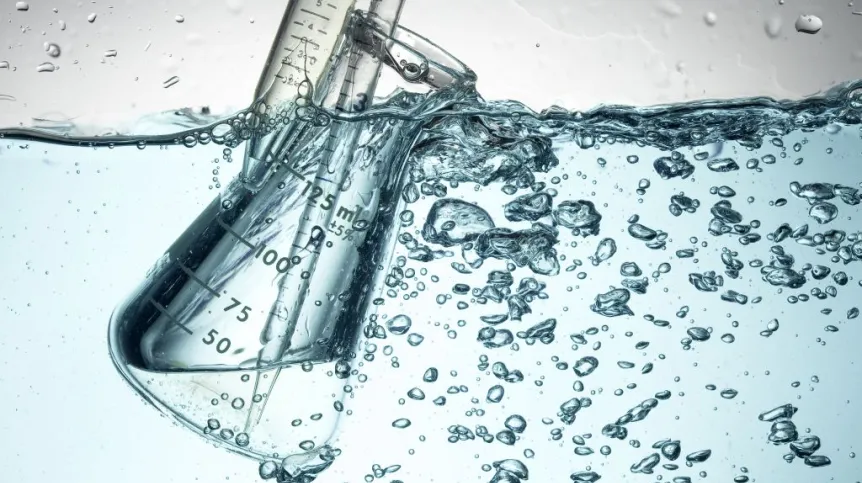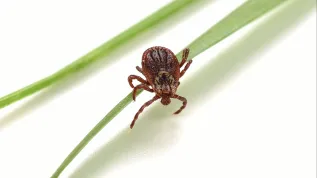
Researchers from Poznań, the only in Poland, analyse the concentration of drugs in municipal wastewater to assess their overall consumption in the city. They hope that in the future they can create a map of drug consumption in Greater Poland, and even in the whole country.
"It should be noted that on the basis of these studies it is impossible to assess how many drug addicts there are in Poznań or another city, or even how many people take drugs. We can only give the number of single doses taken by the population in a given area at a given time" - emphasised the study leader, pharmacist Dr. Jolanta Kłos from the Department of Inorganic and Analytical Chemistry at the University of Medical Sciences.
The expert presented the current results of her team during the XI National Conference "Polish woman in Europe", which took place on 19-20 September in the capital of Greater Poland.
WASTE TALK
"Although these studies are subject to considerable error, because there is always underestimation, it is their greatest strength that they are objective. And even if our results do not reflect the actual amount of drugs consumed by the population, if run for a few years they allow us to assess the profile of these compounds and the changes in their consumption" - said the researcher.
The data obtained show scientists from Poznan shows, for example, that in the summer the consumption of narcotic substances in the city generally drops. "One could argue that it has to do with the fact that at this time there are no students in the city" - commented Dr. Kłos. The exception is observed only when a large sports event is organized, which is usually accompanied by increased intake of drugs.
Researchers also calculate during the study months, methamphetamine had the highest consumption, followed by amphetamines, and in third place ecstasy. The level of cocaine in the samples was low, on the border of the instrument sensitivity. Cannabinoids could not be determined. "Perhaps because these substances rapidly degrade in wastewater, Poznan has only one treatment plant, so before they end up there they must go a long way" - Dr. Kłos assessed.
In comparison with Italian cities, where this type of research has been carried out for many years, the consumption of drugs in Poznań has proved to be more than 20 times lower, even smaller in comparison to London. "London’s results are so high that we would have to completely exclude it to be visible on the international map" - noted the expert.
TEDIOUS ANALYSIS
Currently, the number of people who turn to narcotic substances and the level of consumption of these compounds is assessed by questionnaires completed by respondents. "The results of these studies, however, are quite unreliable. We know that older people working in higher positions tend to hide the information on the contact with drugs, while young people overstate the level of consumption" - explained the expert.
Around the year 2000, papers appeared in the scientific literature on the determination of concentrations of drugs and their metabolites in environmental samples: surface waters and urban wastewater. Then, this method was applied to psychoactive substances. To estimate the cocaine use by the residents of selected Italian cities, levels of the main metabolite of cocaine, benzoylecgonine, were measured in the wastewater. Since 2005, a similar approach has been adopted by countries that have a big problem with drugs, such as Belgium, Spain, the U.S.
"These studies are based on the assumption that all drugs taken by the population in a given area are then excreted by consumers in the urine, either unchanged or as metabolites, and reach sewage treatment plants" - explained Dr. Kłos.
She emphasized that this method can not be used to assess the quantities of drugs used, for example, at open-air concerts, if the urine did not end up in the sewerage system.
The researcher and her colleagues took wastewater samples (5 litres twice a week) from sewage treatment plant in Koziegłowy from June 2009 to December 2010, and processed the results in 2011.
For each of the evaluated drug compounds it is necessary to select the target compound to be determined in the effluent. "In the case of cocaine was its main metabolite, benzoylecgonine, in the case of amphetamines (amphetamine, methamphetamine and ecstasy, i.e. MDMA) it was the parent compound, as these substances are excreted largely unchanged, and in the case of cannabinoids a derivative: carboxylic acid" - said Dr. Kłos.
First, the researchers calculate how much of the substance gets into the wastewater during the day (the daily load of the substance). With data on the wastewater flow and the number of people (households), the amount of substance (metabolite or unchanged substance) entering wastewater can then be estimated. With knowledge of the metabolism of each of the drugs (for example, that 45 percent cocaine is excreted as the main metabolite), it can be calculated how much of the drug is consumed by 1,000 people per day (the consumption ratio), and how many people take the average dose of the drug.
Dr. Kłos noted that on the basis of these studies it is impossible to assess the number of drug addicts in the city, and even the number of drug users. Scientists are not able account for the facts that addicts may take higher doses to achieve adequate psychosomatic effects, or that some people take more doses than others. They only obtain average values.
MANY SOURCES OF ERROR
We should also remember that studies of this type are always subject to the so-called negative error, which means that the consumption of drugs is underestimated.
There are several reasons for this. First, data on the metabolism of drugs, such as cocaine, originate derived from 1950’s. For ethical reasons, today no one tests pharmacokinetics of drugs on volunteers, so there are no new data. Moreover, the metabolism of these compounds is always a bit different in healthy subjects and in drug addicts, and these studies do not take this into account.
Very large error is caused by sewer systems, their age and leakage. The research carried out in Germany and Switzerland shows that during leaks after rain about 50 percent wastewater may not reach the treatment plant. In addition, flow values reported by the plants is subject to about 20 percent error, plus part of the substance degrades along the way.
Errors also occur during the conversion of drug content in wastewater to the number of people served by the treatment plant. "In our estimates, we never analyse demographic data and base our calculations on the total number of people, including infants, children and the elderly. Italian researchers often choose to analyse the number of people from 16 to 64 years of age, because they have the data. They assume that drug consumption is the largest in this age group" - explained Dr. Kłos. Therefore, in comparisons with foreign results it is important to know what demographic information has been collected.
"However, despite the errors associated with this method, there isn’t a more objective way of evaluating drugs consumption in the population. If you continue to use the same methodology, the results are reliable - noted Dr. Kłos. - If we do such tests regularly for few years, as, for example, Italians do, on this basis we could say, for example, that the consumption of intoxicating substances in a given year has increased or decreased."
The study of Poznań scientists is partially funded by the City of Poznań, and in part by a grant from the Ministry of Science and Higher Education. Recently the team of Dr. Kłs has also established cooperation with the Marshal\'s Office in Poznań, which funded the purchase of highly specialized equipment (liquid chromatograph with triple quadrupole, mass detector). It is designed for the determination of substance content in wastewater at very low concentrations (the order of nanograms per millilitre).
In September, researchers started to test wastewater in other cities in Greater Poland, including Konin, Piła, Leszno.
"I hope that soon it will be possible to make a map of drug use in various cities in Greater Poland, and in the future throughout the country" - concluded Dr. Kłos.
PAP - Science and Scholarship in Poland, Joanna Morga
jjj/ agt/ mrt/
tr. RL













